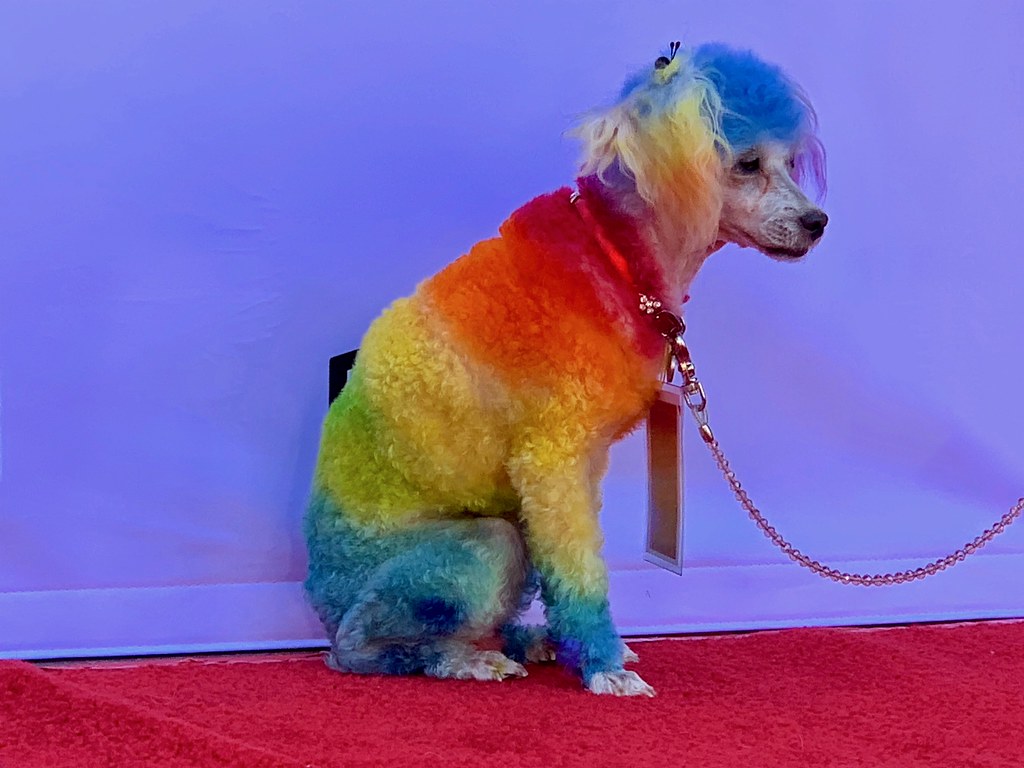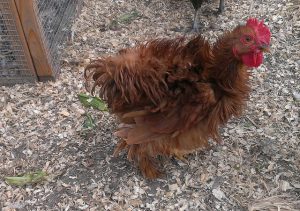15.6 Beyond “One Gene, One Trait”
Elizabeth Dahlhoff
Learning Objectives
By the end of this section, you will be able to do the following:
- Explain how the environment interacts with genotype to result in most observed phenotypic traits.
- Describe the relationship between single genes and multiple traits.
The Environment
Not all traits are directly caused by DNA alone. The environment also plays a large role in shaping an individual’s traits. Some examples can be seen below.
Height and Weight
A number of genes interact to determine the general height and weight that a person will have. But the environment has a major influence as well. If an individual is malnourished, their growth may be slowed and they may be smaller than they would have been if they had gotten enough food. In contrast, if a person consumes more calories than they need, their weight will likely increase regardless of their genetics.
Fingerprints
The general characteristics of a person’s fingerprints are determined by genetics, but the specific pattern is generated randomly during development. Identical twins typically have fingerprints that are similar, but not identical.
Intelligence
Like most aspects of human behavior and cognition, intelligence is a complex trait that is influenced by both genetic and environmental factors. Roughly 50% of a person’s IQ appears to be determined by genetic factors. Factors related to a child’s home environment and parenting, education and availability of learning resources, and nutrition, among others, also contribute to intelligence. A person’s environment and genes influence each other, and it can be challenging to tease apart the effects of the environment from those of genetics. For example, if a child’s IQ is similar to that of his or her parents, is that similarity due to genetic factors passed down from parent to child, to shared environmental factors, or (most likely) to a combination of both? It is clear that both environmental and genetic factors play a part in determining intelligence.
Cancer Risk
For example, a person could inherit a mutation in the BRCA1 gene, which increases the risk of developing breast or ovarian cancer. Researchers have identified more than 1,800 mutations in the BRCA1 gene. Most BRCA1 gene mutations lead to the production of an abnormally short version of the BRCA1 protein or prevent any protein from being made from one copy of the gene. As a result, less of this protein is available to help repair damaged DNA or fix mutations that occur in other genes. As these defects accumulate, they can trigger cells to grow and divide uncontrollably to form a tumor. These mutations are present in every cell in the body and can be passed from one generation to the next. As a result, they are associated with cancers that cluster in families. However, not everyone who inherits a mutation in the BRCA1 gene will develop cancer. Other genetic, environmental, and lifestyle factors also contribute to a person’s cancer risk.
In contrast, cancer can be caused by purely environmental factors. According to the CDC, cigarette smoking is the number one risk factor for lung cancer. In the United States, cigarette smoking is linked to about 90% of lung cancers and people who smoke are 15 to 30 times more likely to get lung cancer or die from lung cancer than people who do not smoke. Radon exposure also increases the likelihood that a person will develop lung cancer.

Pleiotropy
So far, we have discussed examples where changing the DNA sequence of one gene affects one protein, which affects one specific trait (for example, the change from brown to black fur). However, there are examples where one mutation can affect more than one trait. This is called pleiotropy.
MC1R
MC1R, the gene which leads to the difference between yellow and dark colored dogs, is also found in humans. Recall that MC1R helps determine whether mostly eumelanin (dark pigment) or pheomelanin (lighter reddish pigment) will be produced. Humans who produce mostly eumelanin have the active allele of MC1R and have darker skin that tans easily and darker hair. Humans who produce mostly pheomelanin have inactive MC1R proteins and have red or blonde hair and light skin with freckles that does not tan easily.
One relatively obvious secondary phenotype of having lighter skin is that rates of skin cancer are higher in those individuals compared to individuals who have darker skin that tans easily. Since MC1R affects skin pigmentation, it also has an effect on skin cancer rates. In addition, MC1R has an effect on cancer rates that is unrelated to skin pigmentation due to its interactions with other genes that regulate inflammatory responses, DNA repair, and apoptosis (Feller, 2016).
Interestingly, red headed individuals also exhibit higher pain tolerance due to their MC1R alleles (Liem, 2004; Liem, 2006). So far, the reason for this is unknown.
Mutations in MC1R have been shown to decrease knee cartilage in mice (Lorenz, 2014). Again, the mechanism for this is not understood, but likely relates to MC1Rs signaling role.
MC1R polymorphisms have been associated with a decrease in the development of sepsis (blood poisoning) in humans (Seaton, 2017). This is probably due to the role that MC1R plays in inflammation (again, due to its role in signal transduction).
Activation of MC1R by agonists (chemicals that activate receptors) were shown to reduce several harmful symptoms in the kidneys of rats (Lindskog, 2010). The specific reason for this is not understood.
“Frizzled” Chickens
The dominant “frizzle” allele causes feathers to turn upwards rather than remain flat against the chicken’s body (Figure 15.6.2). However, along with producing defective feathers, the frizzle allele also lead to abnormal body temperatures, higher metabolic and blood flow rates, and greater digestive capacity. Furthermore, chickens who had this allele also laid fewer eggs than their wild-type counterparts.

Phenylketonuria
Phenylketonuria (PKU) is a disorder that affects the levels of the amino acid phenylalanine in the body. We get phenylalanine from food, then process it within our cells. Individuals with PKU have a mutation in the enzyme required to break down phenylalanine, but levels of this amino acid build up in individuals with PKU. This build up can lead to a variety of different symptoms including intellectual disability, seizures, poor bone strength, skin rashes, behavioral and mental disorders, and an unusually small head. If you’ve ever seen a warning on a package that says “Phenylketonurics – contains phenylalanine,” this is why.

Practice Questions
References
Feller, L., Khammissa, R. A. G., Kramer, B., Altini, M., & Lemmer, J. (2016). Basal cell carcinoma, squamous cell carcinoma and melanoma of the head and face. Head & Face Medicine, 12:11.
Liem, E. B., et al. (2004). Anesthetic requirement is increased in redheads. Anesthesiology, 101(2):279–283.
Liem, E. B., Joiner, T. V., Tsueda, K., & Sessler, D. I. (2006). Increased sensitivity to thermal pain and reduced subcutaneous lidocaine efficacy in redheads. Anesthesiology, 102(3):509–514.
Lindskog, A., et al. (2010). Melanocortin 1 receptor agonists reduce proteinuria. Journal of the American Society of Nephrology, 21(8):1290–1298.
Lorenz, J., et al. (2014). Melanocortin 1 receptor-signaling deficiency results in an articular cartilage phenotype and accelerates pathogenesis of surgically induced murine osteoarthritis. PLoS One, 9(9):e105858.
Seaton, M. E., Parent, B. A., Mood, R. F., Wurfel, M. M., Muffley, L. A., O’Keefe, G. E., & Gibran, N. S. (2017). Melanocortin-1 receptor polymorphisms and the risk of complicated sepsis after trauma: a candidate gene association study. Shock: Injury, Inflammation, and Sepsis: Laboratory and Clinical Approaches, 47(1):79–85.
Licenses and Attributions
“BRCA1” by Genetics Home Reference: Your Guide to Understanding Genetic Conditions, National Institutes of Health: U.S> National Library of Medicine is in the Public Domain.
“Is intelligence determined by genetics?” by Genetics Home Reference: Your Guide to Understanding Genetic Conditions, National Institutes of Health: U.S> National Library of Medicine is in the Public Domain.
This chapter, “Beyond One Gene, One Trait,” by Elizabeth Dahlhoff, is adapted from chapters in Genetics: Dog Coat Color from in Principles of Biology by Lisa Bartree, Walter Shriner and Catherine Creech (Mt. Hood Community College) under a CC BY-NC 4.0 license. This work is licensed under a CC BY-NC 4.0 license.
Media Attributions
- rainbow poodle
- frizzlechicken
- PhenylketonuricsContainsPhenylalanine
